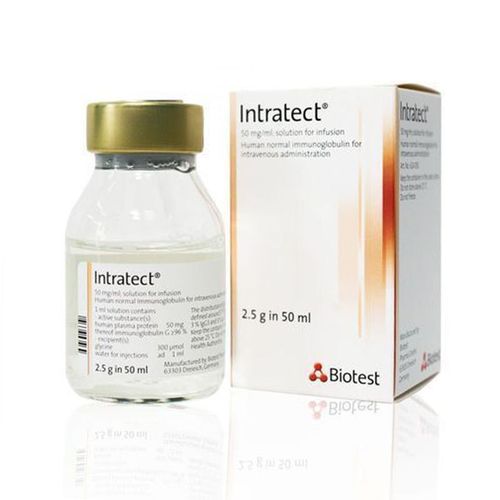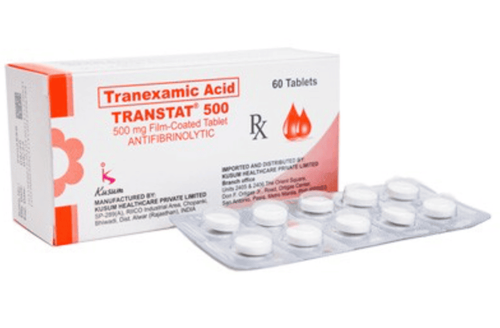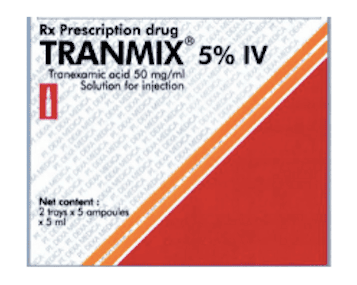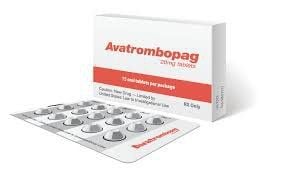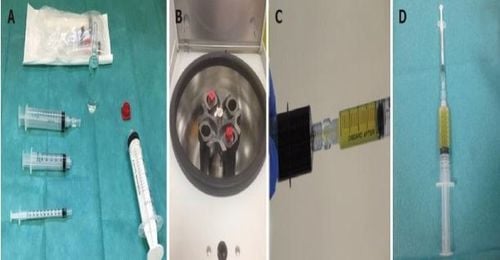This is an automatically translated article.
Thrombocytopenic purpura in children is a bleeding disorder caused by a lack of platelets in the blood. Thrombocytopenia is usually caused by the body's immune system mistakenly destroying platelets. Children with thrombocytopenia will bruise easily and may have other bleeding problems. Therefore, the basic principle in the care of children with thrombocytopenia is the prevention of bleeding events for the child.
1. What is thrombocytopenia hemorrhagic disease in children?
Thrombocytopenic purpura in children often has an immunological etiology. This is a bleeding disorder that occurs when a child's immune system attacks and destroys the platelets. The causes of immune thrombocytopenia are not well known, but may be related to recent viral infections, use of certain medications, immune disorders (including lupus), or infectious diseases. severe infection. Platelets are blood cells circulating in the circulation that help to clot and stop bleeding. Children with thrombocytopenia can bleed anywhere on the body. Fortunately, immune thrombocytopenic purpura in children resolves spontaneously within weeks to months. In some cases, medication may be needed to treat it or the disease will go away on its own.
However, when pediatric thrombocytopenic purpura persists for months to years, the condition can become a chronic condition.
2. How to treat thrombocytopenia in children?
The main reason for treating thrombocytopenic purpura in children is to reduce bleeding symptoms and/or to improve the child's quality of life, giving him enough opportunities to grow and develop as friends. age group.
The general principle in the care of children with thrombocytopenic purpura is to monitor the blood count, as a platelet count lower than 10,000 may increase the risk of bleeding. If this occurs, temporary therapy is needed to increase the platelet count to minimize the risk of bleeding that may occur at any time.
Treatment options for thrombocytopenic purpura include:
Observation by regular monitoring of platelet counts and monitoring of bleeding symptoms Discontinuation of medications believed to be causing the bleeding thrombocytopenic purpura In children Treatment of infections. Other treatments may also be considered, including steroid use (usually prednisone), globulin infusion, drugs that suppress the immune system, or rituximab, which helps the body make more platelets. These drugs "trick" the body's response so it doesn't continue to destroy platelets or help the body make more platelets. In some drug-resistant cases, splenectomy may be recommended.

Sau khi thăm khám, bác sĩ sẽ đưa ra phương án điều trị và chăm sóc trẻ xuất huyết giảm tiểu cầu
Thus, during the care of a child with thrombocytopenia, parents need to know that the drugs are prescribed to prevent the child's own immune system from destroying the platelets. Medications may also be given to help increase platelet counts and prevent bleeding.
Medications used to treat thrombocytopenic purpura can be taken orally or intravenously. When treating at home, parents need to give the child medication as directed. Tell the doctor if your child is allergic to any medications and tell the doctor about any medications, vitamins, and herbs your child is taking.
The duration of treatment will depend on the underlying cause and response to the drug. Platelet counts can rise and fall for months. If a child has immune thrombocytopenia, the condition usually resolves on its own within 12 months. A small number of pediatric patients do not recover during this time and may progress to a chronic condition.
3. Notes in taking care of children with thrombocytopenia bleeding
When taking care of a child with thrombocytopenia bleeding, parents should note the following:
Take care of the child's skin and mucous membranes regularly. Use a soft toothbrush to avoid bleeding gums. Give your child a lip balm to prevent chapped lips. Use a soft towel when bathing. Apply lotion on dry skin. Don't cut your nails too short. Let your child wear sandals or closed-toe shoes to protect their feet, especially the toes. Do not allow children to do activities that could cause injury or participate in contact sports such as wrestling or football. Do not give your child aspirin or non-steroidal anti-inflammatory drugs (NSAIDs). These drugs can interfere with platelet function and make your baby more prone to bleeding or bruising. Take care of cuts, scrapes, or nosebleeds. As soon as it is detected, apply firm, steady pressure to the cut or scratch on the skin. Cover the wound with gauze or a clean towel and raise the body above the heart to limit bleeding. If your child has a nosebleed, hold the tip of the child's nose until the bleeding stops. Always carry a medical warning sign that the child has thrombocytopenia on the young person such as a necklace or bracelet, written on the shirt so that the child can best intervene when an injury or bleeding event occurs.
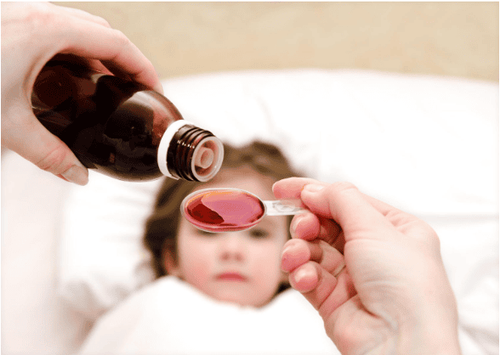
Cha mẹ cho trẻ uống thuốc và chăm sóc trẻ xuất huyết giảm tiểu cầu theo hướng dẫn của bác sĩ
4. What sports can children with thrombocytopenia participate in?
Sports and outdoor activities can be divided into three groups as follows:
Sports that are safe for anyone, even with a bleeding illness: Walking, swimming, tennis. Sports with an average risk of bleeding: Basketball, soccer, baseball. Sports that are potentially dangerous for anyone, even without bleeding: Mountain climbing, racing, skiing, wrestling. In fact, there is no single answer that is absolutely safe for children with thrombocytopenia to participate in sports. As long as a child's platelet count is above 75,000, it's usually safe to play most sports, just be sure to protect yourself like any athlete.
However, when the child's platelet count falls below 75,000, it is best not to let the child play climbing, football, model racing, tennis, or wrestling.
If the child's platelet count is less than 75,000 but greater than 30,000 to 50,000, the child can still participate in light, non-competitive sports activities but needs to be equipped with thoughtful protective equipment, such as a team helmet, wear protective clothing when cycling, rowing, martial arts, jumping rope or lifting weights.
When the platelet count drops further, care for a child with thrombocytopenia is most important to limit the child's vigorous activity, including running, jumping, playing in the house or with other children. Outdoor physical activities should be confined to walking, fishing or swimming.
In summary, what needs to be done to care for a child with thrombocytopenic purpura has the greatest goal of preventing bleeding events, by limiting the risk of injury to the child as well as by monitoring the platelet count. frequent demand. While most cases of children with thrombocytopenia will recover quickly, some children need to actively find the cause and treat it, so that the child still has the opportunity to develop to the full as his peers.
Pediatrics department at Vinmec International General Hospital is the address for receiving and examining diseases that babies and children have. With a system of facilities, modern medical equipment, sterile space, minimizing the impact as well as the risk of disease spread, Vinmec will bring satisfaction to customers and receive expert advice from experts. Highly rated by industry participants:
Gathering a team of leading doctors and doctors in Pediatrics: Including leading experts, highly qualified (professors, associate professors, doctoral, masters), experienced, have worked at the hospital. big hospitals like Bach Mai, 108.. The doctors are all well-trained, professional, have a heart - reach, understand young psychology. In addition to domestic pediatric specialists, the Department of Pediatrics also has the participation of foreign experts (Japan, Singapore, Australia, USA) who are always pioneers in applying the latest and most effective treatment regimens. . Comprehensive services: In the field of Pediatrics, Vinmec provides a series of continuous medical examination and treatment services from Newborn to Pediatric and Vaccine,... according to international standards to help parents take care of their baby's health from birth to childhood. Advanced techniques: Vinmec has successfully deployed many specialized techniques to make the treatment of difficult diseases in Pediatrics more effective: neurosurgery - skull surgery, stem cell transplantation blood in cancer treatment. Professional care: In addition to understanding children's psychology, Vinmec also pays special attention to the children's play space, helping them to play comfortably and get used to the hospital's environment, cooperate in treatment, improve the efficiency of medical treatment. References: drugs.com, rch.org.au, childrenshospital.org




